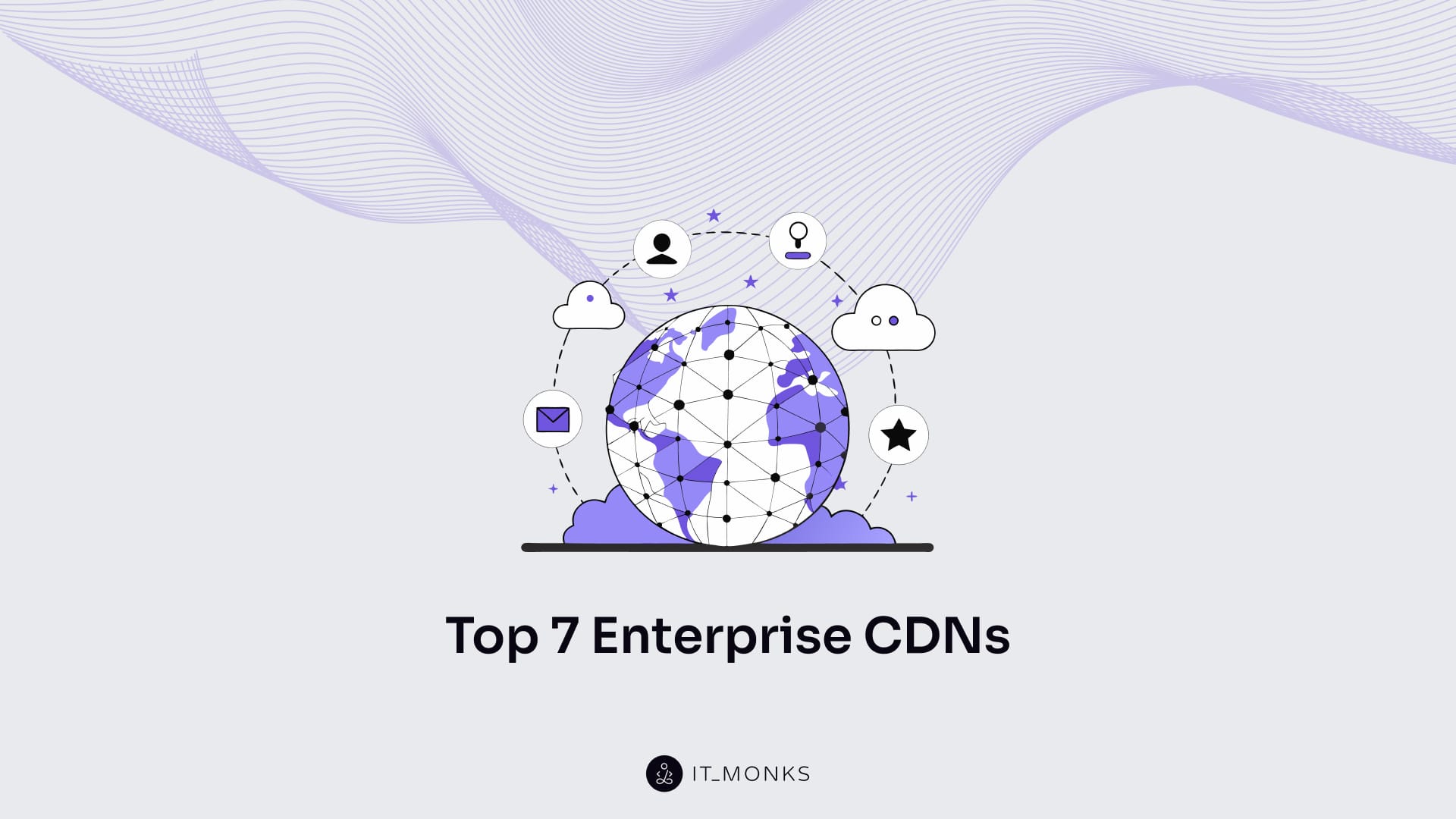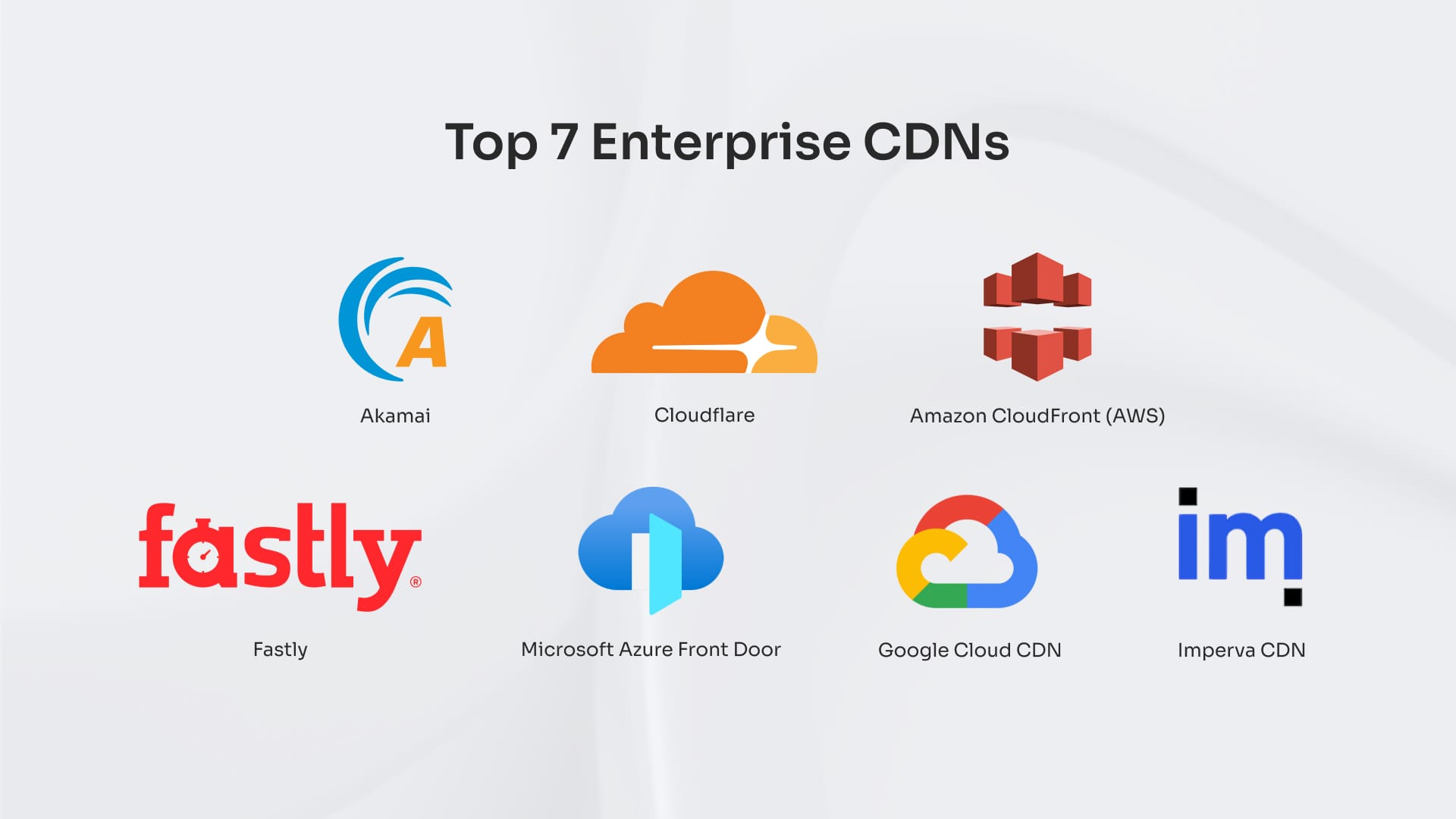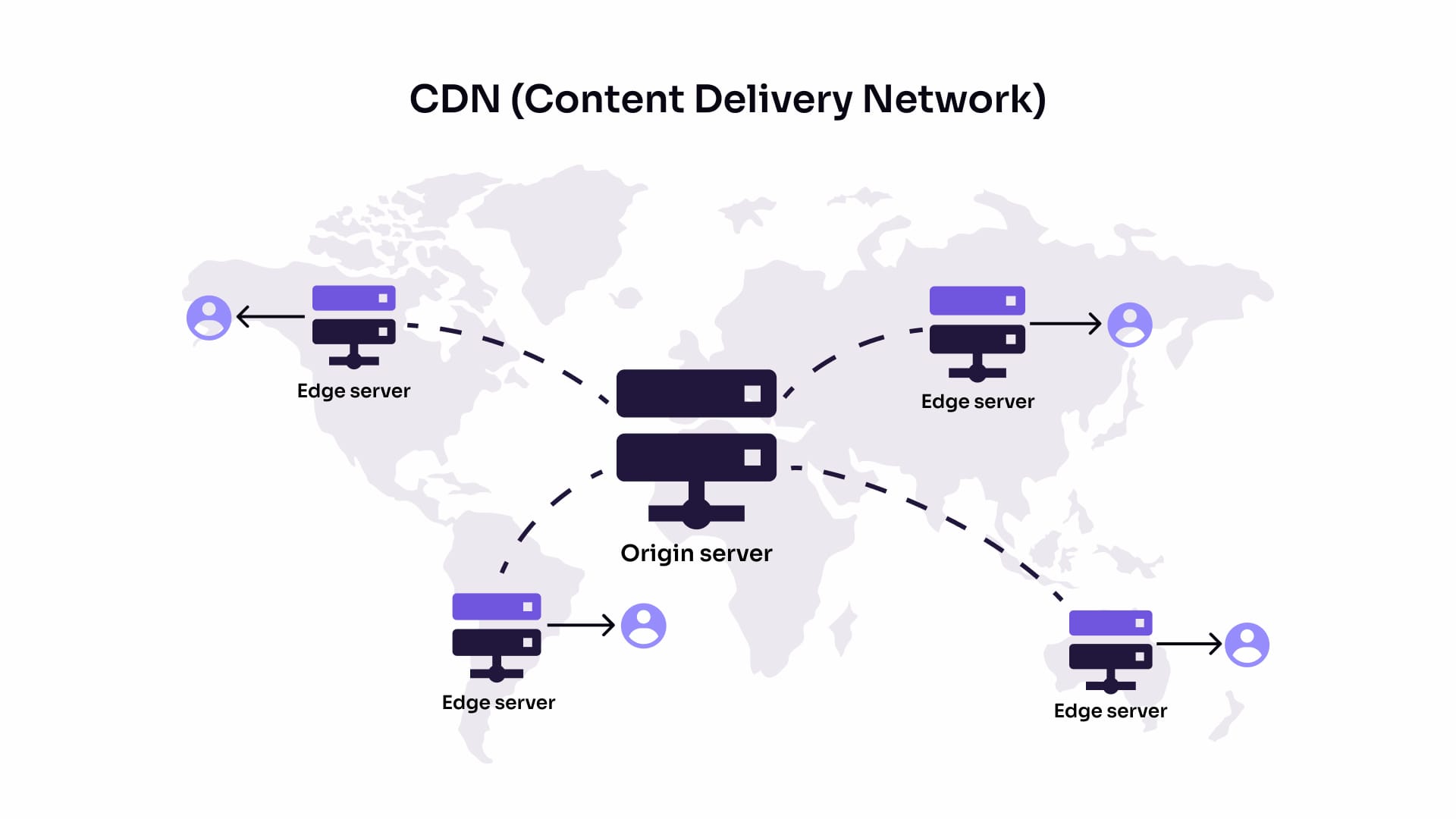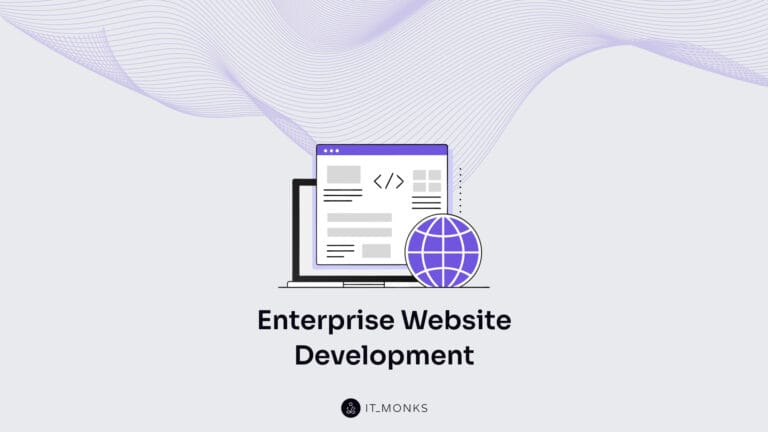Top 7 Enterprise CDNs
Table of Contents

Enterprise Content Delivery Networks (eCDNs) have become essential CDNs for optimizing content delivery.
As more companies use video for communication and training, the need for top eCDNs is rapidly increasing. The global market for content delivery networks, which includes enterprise content delivery networks, is expected to grow from $30.51 billion in 2025 to $132.32 billion by 2032. This widespread shift drives increased reliance on eCDNs to manage growing network loads.
Enterprise content delivery networks work by securely distributing content behind corporate firewalls, caching content, such as video streams or software updates, on edge servers or within the enterprise LAN, reducing the need for repeated downloads from central servers. When multiple users access the same content, eCDNs ensure only a single copy is downloaded from upstream servers and distributed locally.
Key benefits of top enterprise content delivery networks include improved website and video performance, enhanced security, scalability to handle traffic spikes, real-time analytics, and significant cost savings by reducing reliance on high-capacity internet connections.
What is Enterprise CDN?
Enterprise CDN is a specialized system designed to efficiently distribute digital content, such as applications, videos, and large files, across an organization’s internal and sometimes external networks.
The main purpose of an eCDN is to optimize content delivery, ensuring fast, reliable, and secure access for employees, partners, and customers, regardless of their location.
eCDNs operate both internationally and across continents, using a network of edge servers placed strategically to reduce latency and manage bandwidth effectively.
Security is a core feature of eCDN, which provides strong encryption, access controls, and secure token authentication, protecting sensitive data as it moves across the network. eCDN has advanced threat detection, tamper prevention, and anti-DDoS capabilities that safeguard against cyberattacks and unauthorized access.
Key performance metrics for eCDNs include bandwidth usage (the amount of data transferred within a period), latency (the time it takes for data to reach users), cache hit ratio (how often content is served from local caches), throughput (data delivery speed), error rates, and time to first byte (TTFB). Monitoring these metrics ensures optimal user experience and network efficiency, making eCDNs essential for modern enterprises.

1. Akamai
Akamai is a globally recognized content delivery network used within organizations to optimize internal and external content delivery, security, and application performance.
Akamai’s primary goal is to support enterprise use cases by minimizing latency, improving user experience by reducing the distance data must travel, enhancing enterprise security by distributing content closer to end users through a vast global network, and integrating with eCDN solutions for internal corporate needs.
The key functionalities of Akamai include:
- Performance optimization: Advanced caching, dynamic content acceleration, and real-time routing algorithms for faster load times.
- Comprehensive security: DDoS protection, Web Application Firewall (WAF), secure token authentication, and threat intelligence.
- Edge computing: Serverless computing at the edge runs applications closer to users, reducing overhead and improving response times.
- Advanced analytics: Real-time and historical analytics for monitoring traffic, performance, and user engagement.
Akamai operates over 300,000 servers in over 130 countries, with over 1,500 networks and an edge capacity exceeding 1 Pbps (petabits per second).
Major companies using Akamai are typically large enterprises with global reach – GoDaddy, EPAM Systems, Unity Technologies, and SAP.
2. Cloudflare
Cloudflare is a comprehensive content delivery network and web performance platform that operates as a reverse proxy service, routing website traffic through its globally distributed network of servers.
Cloudflare’s main purpose is to make websites load faster and keep them safe from attacks by combining content delivery with strong security features. Its global network ensures reliable performance for businesses of any size.
Here are the key functionalities of Cloudflare:
- Intelligent load balancing: Delivers content via a vast global network to prevent server overloads.
- DDoS protection: Built-in, always-on protection against DDoS attacks at both network and application layers.
- Web Application Firewall (WAF): Protects against common vulnerabilities like SQL injection and cross-site scripting without infrastructure changes.
- SSL/TLS management: Automatic SSL provisioning with options for custom certificates and advanced features like Keyless SSL.
- Threat intelligence: Proprietary threat intelligence and analytics to detect and respond to emerging security threats.
Cloudflare operates a vast network with over 200 locations in more than 90 countries, delivering content from the edge for maximum speed and resilience.
Prominent enterprise clients using Cloudflare include major technology, government, healthcare, and education organizations, such as IBM, L’Oréal, and the US Department of Homeland Security.
3. Amazon CloudFront (AWS)
Amazon CloudFront is a content delivery network operated by Amazon Web Services that uses a globally distributed network of proxy servers to cache and deliver content closer to end users.
The main goal of AWS is to optimize global application performance and availability by combining intelligent routing, load balancing, and robust security at the edge of Microsoft’s network.
The key features of Amazon CloudFront are:
- Integrated security: Protection against network and application layer attacks via AWS Shield, AWS WAF, and Route 53; supports SSL/TLS encryption and advanced HTTPS features.
- Edge computing: Supports Lambda@Edge and CloudFront Functions for running code at the edge.
- Real-time metrics and logging: Provides real-time metrics, standard and real-time logging, fast cache invalidation, and full-featured automated APIs.
- Flexible access control: AWS has features like signed URLs/cookies, geo-restriction, and Origin Access Identity (OAI) for secure content delivery.
AWS operates over 400 points of presence (PoPs) in 90+ cities across 47+ countries, covering every continent except Antarctica.
Amazon CloudFront is used by such enterprises as Amazon.com, Supercell, GoDaddy, Pure Storage, Druva, AutoScout24, and PicPay.
4. Fastly
Fastly is a next-generation content delivery network designed to deliver static, dynamic, and streaming content quickly and securely through a globally distributed edge cloud platform.
The primary goal of Fastly is to accelerate web and application performance, reduce latency, and provide developers with real-time control over content delivery and security. Fastly offers instant configuration changes, rapid content updates, and edge computing capabilities.
The key features of Fastly are the following:
- Instant cache invalidation: Purge outdated content globally in milliseconds (Instant Purge™).
- Edge computing and customization: Real-time configuration changes, edge logic, and API-driven management.
- Advanced security: Always-on DDoS mitigation, WAF, bot detection, and TLS at scale.
- Granular analytics: Real-time log streaming and deep insights into content access and performance.
- Dynamic and static content delivery: Optimized for APIs, video streaming, image optimization, and dynamic site acceleration
Fastly operates a global edge network with approximately 427 Tbps of capacity, spanning around 80 locations in over 30 countries across six continents, with especially strong presence in North America and Oceania.
Companies using Fastly include Amazon, Volkswagen Group, The New York Times, Stripe, Squarespace, and AutoTrader.
5. Microsoft Azure Front Door
Azure Front Door is a cloud-based global CDN and application delivery service from Microsoft, offering secure and scalable access to web applications.
The main purpose of Microsoft Azure Front Door is to provide fast, reliable, and secure access to static and dynamic content, while offering intelligent traffic routing, layer 3-7 DDoS protection, and load balancing at the edge.
Microsoft Azure Front Door has the following key features:
- Layer 3-7 DDoS protection: Built-in multi-layer DDoS protection and integrated Web Application Firewall for comprehensive security.
- SSL offload and management: Edge SSL termination with automated certificate management and support for custom domains.
- Intelligent load balancing: Health-based load balancing and intelligent routing across multiple origins.
- Custom rules engine: Advanced routing and business logic with a flexible rules engine.
- Real-time monitoring and analytics: Integrated dashboards, real-time monitoring, and alerting for traffic and security events.
Azure Front Door operates from 192 edge locations across 109 metro cities, spanning multiple countries and regions, including North America, South America, Europe, Africa, the Middle East, Asia, Australia, and New Zealand.
Major enterprise users include Accenture, Ernst & Young Global, and Advocate Health.
6. Google Cloud CDN
Google Cloud CDN is a globally distributed content delivery network integrated with Google’s infrastructure to accelerate web and media content delivery.
Its primary goal is to accelerate and secure web content for global audiences by caching resources at edge locations, offering features like dynamic compression, custom cache keys, and seamless integration with Google’s HTTP(S) Load Balancer.
Key features of Google Cloud CDN include the following:
- Global edge network: Leverages Google’s extensive global infrastructure to cache and deliver content close to users.
- Integrated with load balancer: Works with Google’s external Application Load Balancer for flexible backend integration.
- Google-managed SSL certificates: Simplified SSL/TLS management with Google-managed certificates.
- Security integration: Supports Google Cloud Armor for edge and backend security policies, including DDoS and WAF features.
- Detailed logging and analytics: Provides logging for cache hits and misses and integrates with Google’s monitoring tools.
Google’s edge network spans over 3,000 locations worldwide, boasting over 100 Tbps of egress capacity.
Leading organizations such as Rewe Group, Great-West Lifeco, and the Norwegian Labour and Welfare Administration rely on Google Cloud CDN.
7. Imperva CDN
Imperva CDN is a content delivery network with integrated advanced security that is designed to deliver content rapidly while protecting against cyber threats.
The main purpose of Imperva CDN is to reduce latency, improve load times, and safeguard digital assets from threats such as DDoS attacks, web vulnerabilities, and bot traffic. Imperva combines intelligent caching for content, real-time analytics, and robust security features within a single platform.
Imperva CDN has the following key features:
- Integrated security: Built-in Web Application Firewall (WAF), DDoS mitigation, and bot management.
- Customizable rules: Advanced delivery and load balancing rules for tailored performance and security.
- Real-time monitoring: Comprehensive dashboards for tracking performance and security metrics.
Imperva’s network spans more than 45 countries, providing enterprise-grade edge capacity to support high-traffic environments. Leading global enterprises such as McKesson, Enel, and Deutsche Telekom rely on Imperva CDN for secure, reliable content delivery.
How does Enterprise Content Delivery Networks (eCDN) work?
The eCDN works by deploying a network of edge servers within or across an enterprise’s network infrastructure. These servers cache and deliver digital content, such as web pages, videos, or software updates, from locations closer to end users.
When an employee or user requests content, the eCDN directs that request to the nearest edge server, rather than sending it all the way back to the central origin server. If the content is cached locally, it is delivered immediately, slashing load times and reducing strain on the main network. If not, the edge server retrieves it from the origin, caches it, and serves it to the user, ensuring future requests are even faster.
A key component in this process is the enterprise load balancer. This system distributes incoming requests efficiently across multiple edge servers, preventing any single server from becoming overloaded and maintaining high availability and performance for all users.
For example, during a company-wide live video broadcast like a town hall, an eCDN allows thousands of employees to watch simultaneously. Instead of each viewer downloading a separate stream from the internet, which would strain the company’s bandwidth and firewalls, the video is downloaded once to the local eCDN server and then distributed efficiently to all viewers within the office or branch.

What Are the Benefits of Using an Enterprise Content Delivery Network?
Enterprise content delivery network has such benefits as faster content delivery, reliability and uptime, improved security, enhanced scalability, cost-effectiveness, better user experience, SEO, and a competitive edge.
- Improved website speed: eCDNs cache content on edge servers close to users, significantly reducing latency and loading web pages faster. This is critical for enterprises with a global audience, as slow load times can drive users away and hurt conversion rates.
- Enhanced reliability: An eCDN ensures high availability and uptime by distributing content across multiple servers. If one server fails or experiences congestion, traffic is automatically routed to another, minimizing downtime and maintaining a smooth user experience.
- Stronger security: Enterprise CDNs offer advanced protection against cyber threats such as DDoS attacks and data breaches. Their distributed architecture makes it harder for attackers to overload the system, and many include features like SSL encryption and traffic filtering for added safety.
- Improved scalability: eCDNs are designed to handle traffic spikes effortlessly, making them ideal for enterprises that experience periodic surges in demand or plan for growth. This scalability ensures consistent performance even during peak usage.
- Cost efficiency: ECDNs reduce bandwidth costs and lower infrastructure expenses by offloading traffic from origin servers. This allows enterprises to serve more content to more users without increasing their operational budget.
- Optimized user experience: Fast, reliable, and secure content delivery leads to more satisfied users, higher engagement, and better retention rates, which are the key factors for enterprise success.
- SEO and business advantage: Search engines favor fast-loading, highly available websites, which can improve SEO rankings and drive more organic traffic to enterprise sites.
Contact
Don't like forms?
Shoot us an email at [email protected]

Send a Project Brief
You need to load content from reCAPTCHA to submit the form. Please note that doing so will share data with third-party providers.
More InformationYou are currently viewing a placeholder content from Turnstile. To access the actual content, click the button below. Please note that doing so will share data with third-party providers.
More InformationYou are currently viewing a placeholder content from Facebook. To access the actual content, click the button below. Please note that doing so will share data with third-party providers.
More InformationYou are currently viewing a placeholder content from Instagram. To access the actual content, click the button below. Please note that doing so will share data with third-party providers.
More InformationYou are currently viewing a placeholder content from X. To access the actual content, click the button below. Please note that doing so will share data with third-party providers.
More Information

